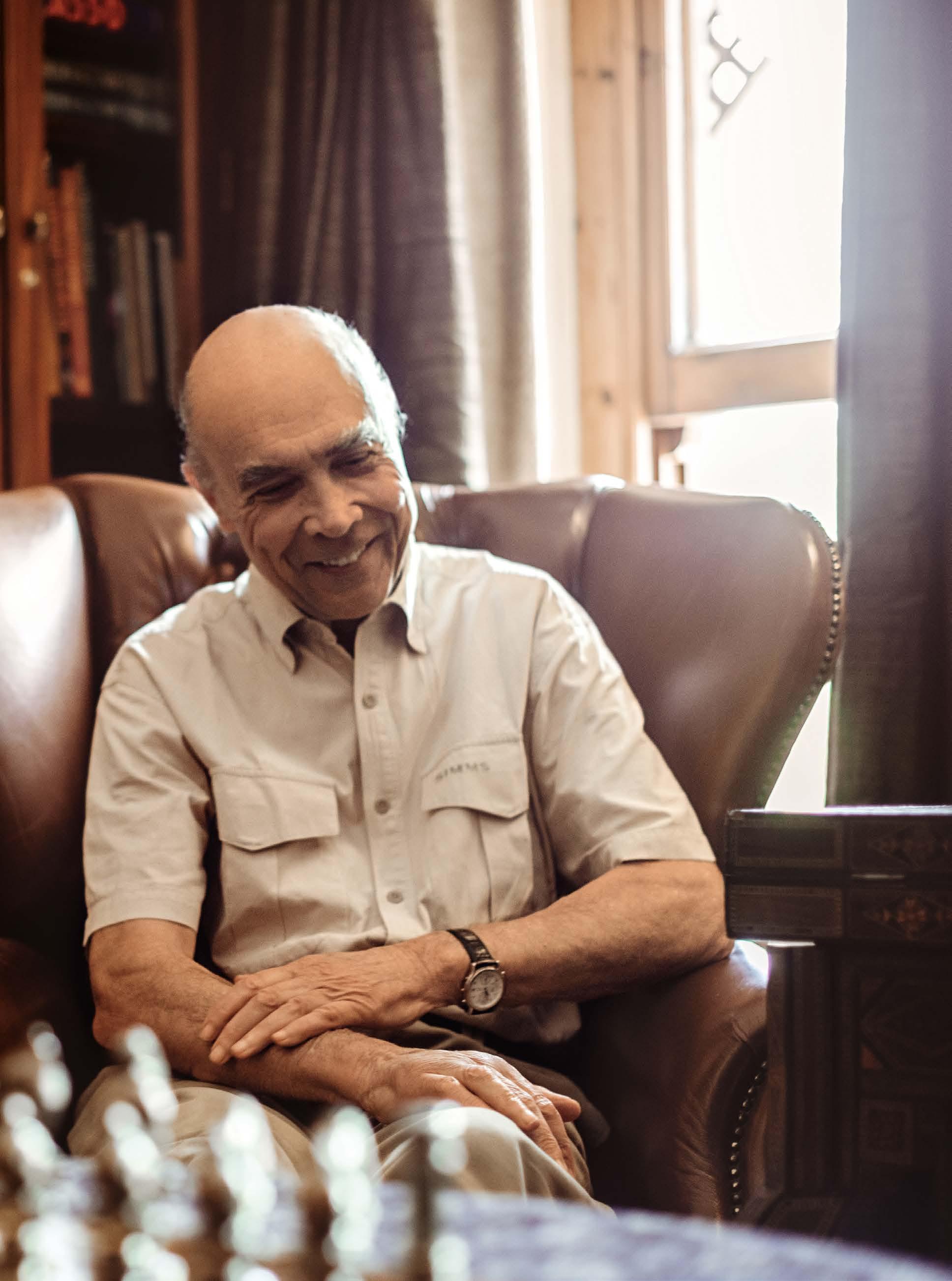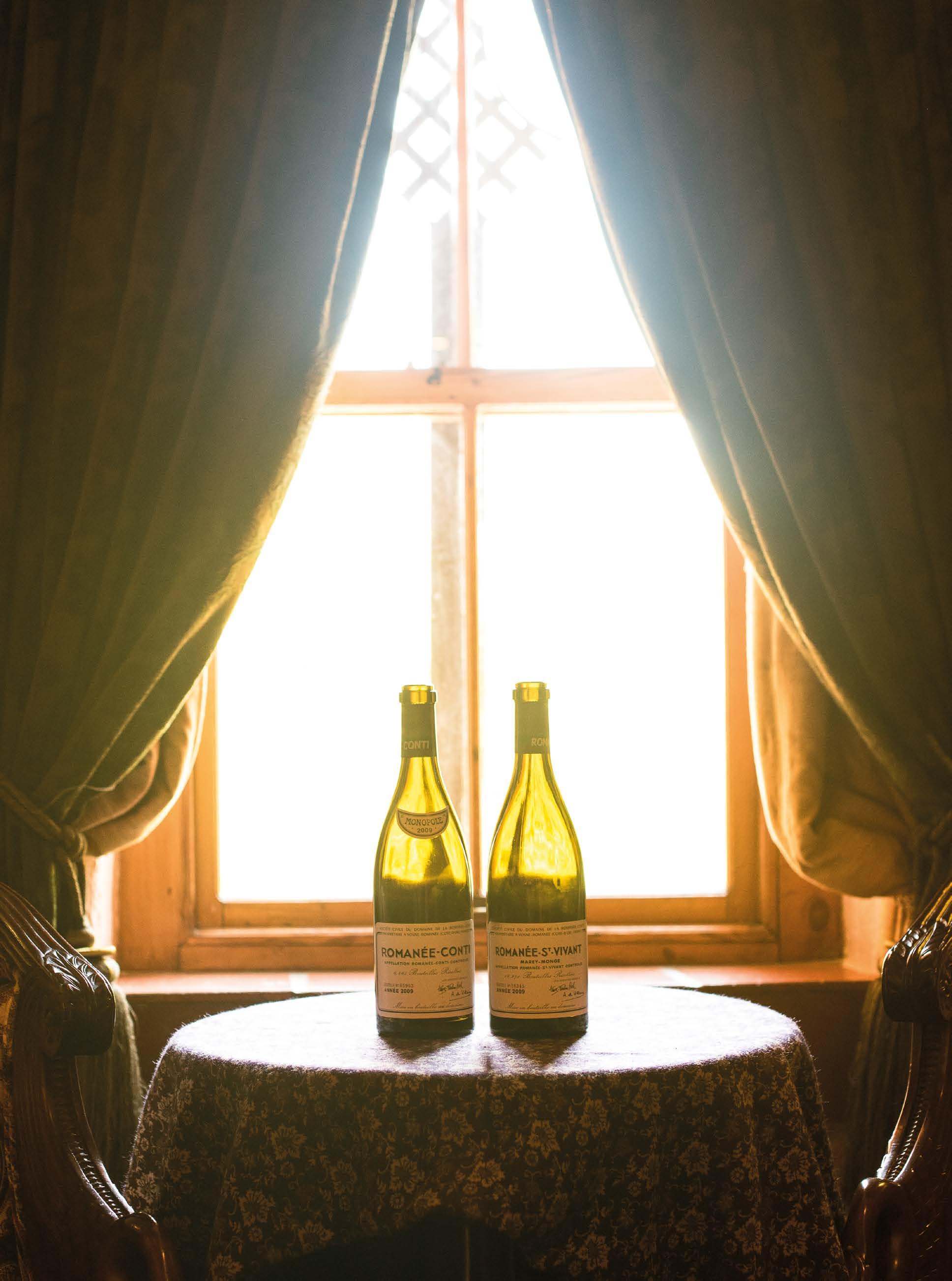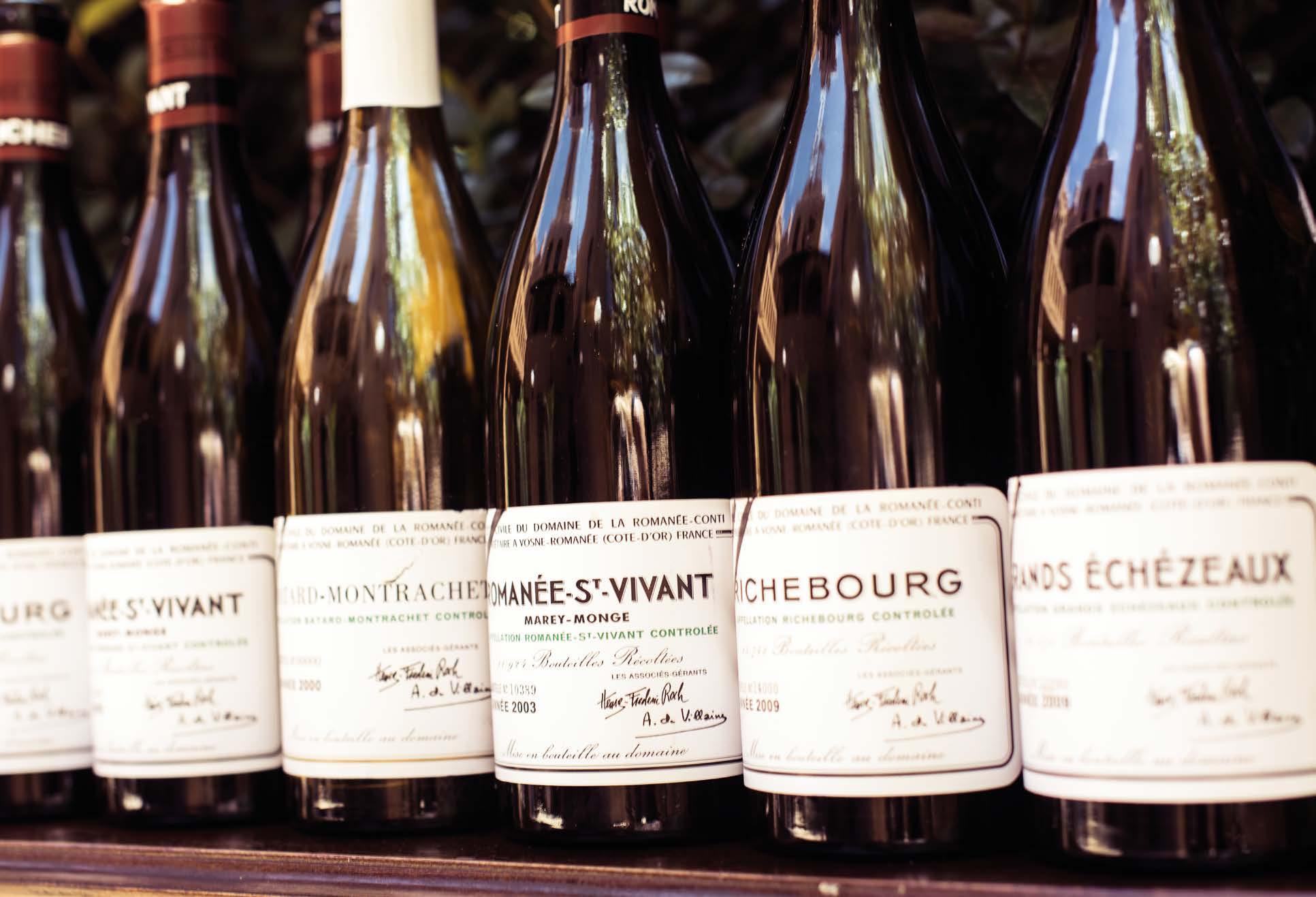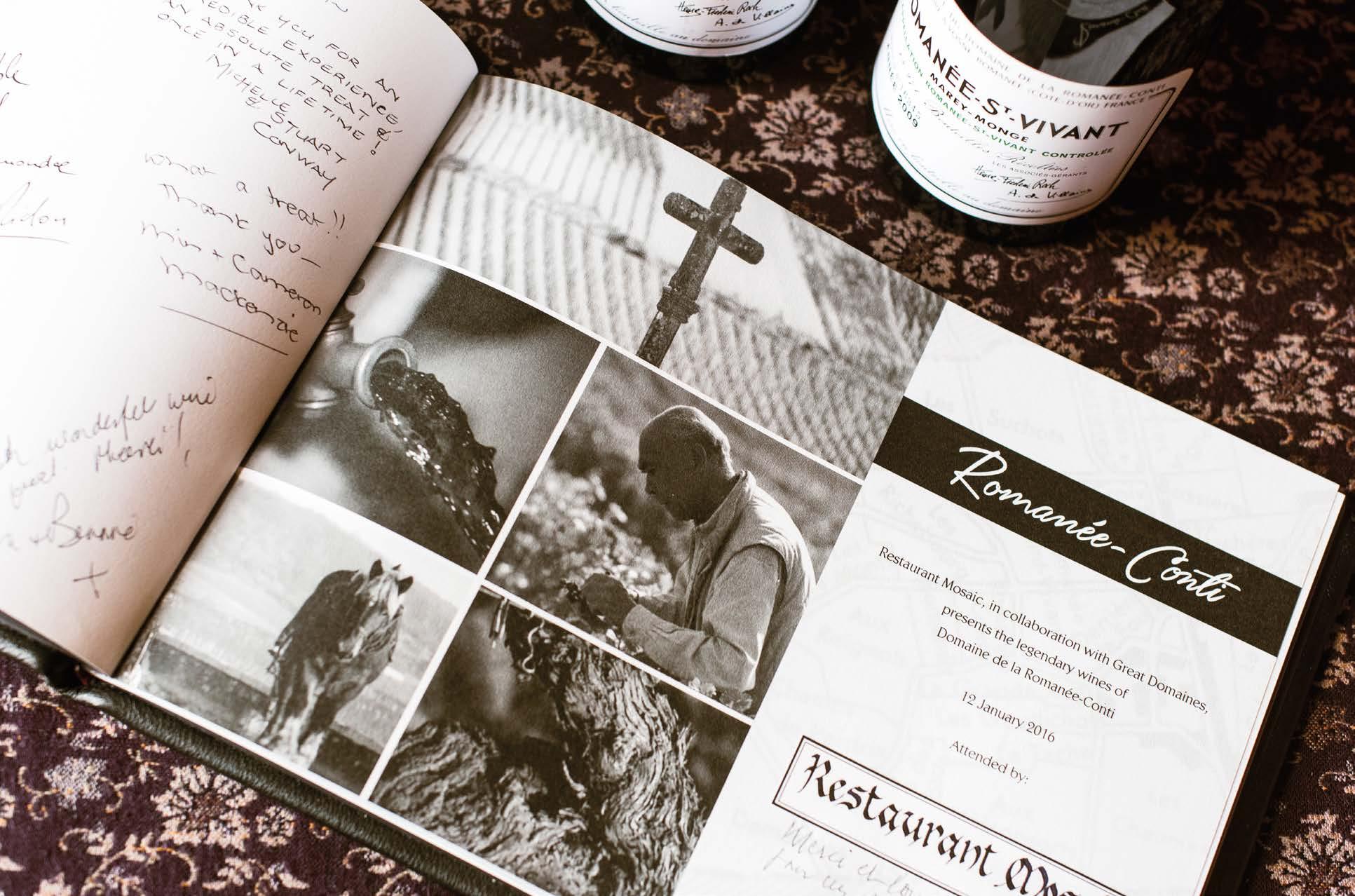
7 minute read
Wine, Worms & Wisdom
THE WINES OF DOMAINE DE LA ROMANÉE-CONTI Romanée-Conti Corton La Tâche Richebourg Romanée-St-Vivant Grands-Echézeaux Echézeaux Montrachet Corton

Advertisement
When
Aubert de Villaine,
co-director with Henri-Frédéric Roch of Domaine de la Romanée-Conti in Burgundy, walked into the small library at Mosaic in the Francolin Conservancy, there was no hint of tiredness, although he would have been excused had he been a trifle weary.
He’d crossed continents to be here in the Crocodile River Valley near Pretoria; from the wintry vineyards of Burgundy to the southern tip of Africa, with sweltering temperatures more suited to the Sahara at noon than a Highveld summer. The last time he was in South Africa was 20 years ago. He crosses his legs clad in an impeccably tailored pair of chinos, waves away any suggestion of a drink and begins telling me about his evening.
This naturally abstemious man had hosted a dinner the night before: a wine tasting of some of the world’s finest Burgundian wines, followed by a six-course blockbuster degustation menu created by chef Chantel Dartnall, twice voted South Africa’s Chef of the Year. The small audience was select, because each of the people there had, at some time or another, bought a wine (or really, really wanted to drink one) from the Domaine, if not from Romanée-Conti itself.
Let’s talk about the wines, because here we’re approaching something close to vinous heaven. De Villaine is sometimes described as the Cardinal of Pinot Noir (the wines of Domaine de la Romanée-Conti are predominantly made of the capricious pinot noir grape and chardonnay) in no small part due to his emotional, physical and financial investment in these Burgundian princes. The white varietal – aligoté - is also grown by him but the fields are outside the Unesco certified area. There are eight estates which make up Domaine de la Romanée-Conti (often abbreviated to DRC) and the grandest of these alluring wines are the silken bottles of Domaine de la Romanée-Conti Corton itself. At auction or by allocation, these wines are probably the most expensive in the world.
I’m not sure if De Villaine is smiling with delight or not; he is, essentially, a modest man, frequently described by himself and others who know him well, as humble. But let’s say he’s not dismayed. In an average year, Domaine de la Romanée-Conti produces only 460 cases nurtured on an estate of no more than 1.8 hectares yielding around 6,000 bottles. In a year when the crop is extraordinary, it can go to around 500 precious cases.
In the past few years, the harvest has had to recognise a new and hungry demand beyond Europe and North America; China has loomed large as a determined buyer. Rarity has a price, and at the time of writing, Romanée-Conti itself is easily one of the rarest wines in the world.
De Villaine shrugs lightly. “If only I could produce more,” he says, “I would be very happy. But ce n’est pas possible.” Another almost imperceptible shrug. “So, we have to allocate.”
Sitting on a sofa close to hand but as silent as an owl on the wing, is Domaine de la Romanée-Conti’s sole South African distributor, founder of fine wine importer and merchant Great Domaines, Wayne Visser. For 16 years his relationship with De Villaine and Domaine de la Romanée-Conti and its wines has flourished. Like the soft-spoken De Villaine, he shrugs. “Seven bottles of Romanée-Conti is better than no bottles.” And, of course, there are more buyers than bottles.
In a good year, South Africa is allocated just seven bottles of the elixir. The 2009 vintage of RomanéeConti came at a price of R50,000 per bottle, but this is easily exceeded by the London price of a bottle of the same vintage, which sold for R225,000. “But that,” Visser points out, “is because there’s an educated fine wine market there and wine’s traded as a commodity.” It was a good vintage, producing wines described as “plush”.
De Villaine’s wine journey has been a long one (he is in his mid-70s) and his arrival as a man of vision in his industry is no mistake, although it could be argued that he started in pole position by being born into the family business, which stretches back generations. The wines themselves are among the oldest in the world, cultivated initially by the Romans and then, in 1232, by monks, marking the first “official” vintage. There are long memories of wine and climate and vinous heritage in this part of Burgundy.
When I ask him about climate change concerns he is cautious. “One should not be in too much of a hurry,” he says. “Around 1500 there was a very hot spell and then later on, a very cold spell, but neither of them lasted. Nonetheless, it is fair to say we are taking precautions.” He will not be drawn on them. He has to be cautious, he says, because everyone wants to imitate a wine from Domaine de la Romanée-Conti and as such they are fiercely guarded against exploitation.


When first embarking on his 40-year career, he undertook to restore the reputation of Burgundy itself, beset by phylloxera in the 1880s, World Wars 1 and 2, and, he says, it only began to recover its stature from the 1950s. “I think I was conscious of a certain number of things that were essential for progress in quality. I tried to put them in place and little by little it worked.” Like biodynamics.
“It began by going organic 25 years ago,” he says, “and that made a real difference to the wines produced.” And then, in his quest for “the greatest possible wines” he moved to biodynamics. It is the small details which count, he explains carefully, the layering of care and humility for the soil.
This includes, by the way, horses in the vineyards to haul the grapes because their weight does not compact the soil as tractors would. And it includes worms. It was when he saw these useful little creatures aerating the soil in ever increasing numbers that he knew organic, biodynamic cultivation was the route for greater, even more complex wines. He loves them unreservedly.
It is easy to be seduced by all of this, and De Villaine knows it. He describes his first love, Romanée-Conti, as a wine that doesn’t want to show off. “It doesn’t have lipstick or make-up. It has a hidden elegance.”
One of his major achievements is to have a carefully delineated part of Burgundy – including the Domaine de la Romanée-Conti – declared a Unesco World Heritage site. But behind all of this is a quiet enjoyment in his passions. What then for Aubert de Villaine, himself, I ask.
What, for instance, is he doing in South Africa, last visited by him 20 years ago? Is he, perhaps, thinking of a partnership with one of our great winemakers? De Villaine shakes his head. “Non, non. I am here to look, taste, say thank you and no more. One day I would like to retire.” He hesitates slightly. “But not just yet.”
So what is his idea of a sliver of pure happiness and contentment in the midst of this drive, this vision which so occupies him? The man who wanted to become a teacher either of literature or philosophy thinks carefully.
“It is very simple. Sitting drinking a wine that is totally open, with music I love, like a Beethoven quartet, in a place that is where my heart resides. That is happiness, non?”
THE DOMAINE ROMANÉE-CONTI MENU AT RESTAURANT MOSAIC
Prelude Jewels of the Sea paired with Champagne Salon 1995 Luderitz Oyster with a Home Cultivated Pearl First Growth Asparagus Mousse Le Premiers Plats The Alchemists Infusion paired with Bâtard-Montrachet 2000 West Coast Lobster, Hibiscus Consommé and Heirloom Vegetables Birds of a Feather paired with Vosne-Romanée 1er Cru 2006 Local Game Bird Terrine with Truffle Brioche Ostrich, Pheasant, Rock Pigeon Queen Quail Brushed with Acacia Honey Plats Principaux Cochon de Lait paired with Romanée-St-Vivant 2003 Slow Roasted Suckling Pig with Spiced Pickled Cherries Prints in the Paddock paired with La Tâche 2005 Waterbuck with a Fine Herb Jus
Cours de Fromage Singularity One Cheese, One Wine
Dessert Passiflora Paradise paired with Weingut Kruger-Rumpf Münsterer Pittersberg Riesling Eiswein 2009 Passion Fruit with Elder Flower and Vanilla Café et Mignardises










